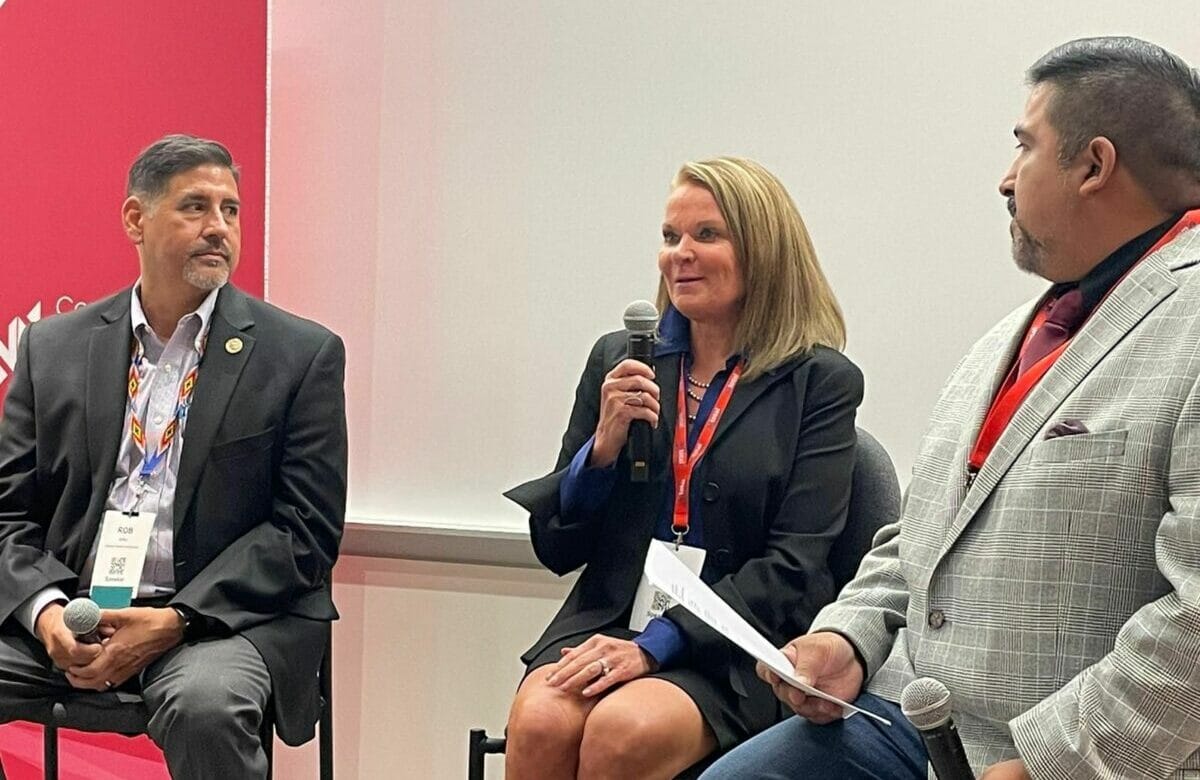Tribal Nations Face Challenges in Accessing and Maximizing Funding: Connected America Conference
The lengthy grant application process can be a barrier for Tribes with limited resources.
Em McPhie

DALLAS, March 31, 2023 —Tribal lands remain among the areas in the United States that most lack broadband access, but an influx of federal funding could help to close the divide if Tribes are able to build successful partnerships and navigate a challenging grant application process, according to speakers at Connected America on Wednesday.
“We’ve been promised for decades by the biggest carriers in the world that they’re going to bring good connectivity to southeastern rural Oklahoma, and they haven’t,” said Rob Griffin, Tribal broadband coordinator for the Choctaw Nation of Oklahoma. “They’ve failed, so we’ve worked with regional operating carriers, we’ve worked to build our own fiber networks, and we’re working to gain access to applications and grants over the next couple of years to work with other ISPs and other regional operating carriers.”
Much of this development is being bolstered by federal funding. On March 23, the National Telecommunications and Information Administration announced two new grants through the Tribal Broadband Connectivity Program, bringing its total to more than $1.75 billion awarded to 135 Tribal entities.
Several Tribal entities are also hoping for funding through the Broadband Equity, Access and Deployment program, although the map being used to allocate BEAD funds has been criticized for inaccurately representing Tribal areas.
Although the federal grants present a significant opportunity, Griffin noted that the lengthy application process can be a barrier, particularly for Tribes with limited resources.
Smaller Tribes “might have a part-time IT person if they’re lucky… They don’t have technical resources,” agreed Lisa Hanlon, CEO of the Teltech Group and Cherokee Nation citizen.
Another layer of complexity comes from the number of different federal agencies offering grant funding, each with their own specific requirements and nuances, said Paul Narro, director of public policy for local internet service provider TekWav.
As the grant programs continue, Hanlon advocated for Tribal entities to work with local providers to maximize federal funding, benefiting both parties. In order for such partnerships to be successful, she said, providers must understand the structure of the specific Tribal nation they are working with and then to listen to what the Tribal leaders actually want.
Griffin advised providers to take a long-term approach to working with Tribal nations.
“We’re thinking in terms of how to build things for the next 100 years,” Griffin said. “And when you think like that, your economies of scales are different and your planning stages are different. So if you’re in the process of working with a Tribal nation, just gear your thinking around, ‘How can I help this Tribe and really build a partnership over the next 20, 40, 60 and 100 years?’”









Member discussion